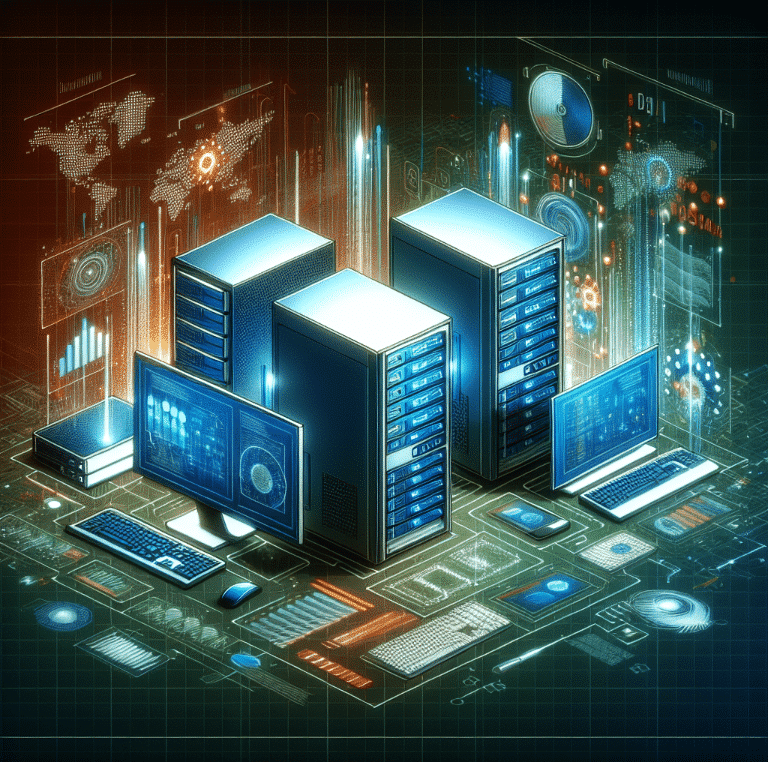
Computing systems are the backbone of our modern digital world. They power everything from simple calculators to sophisticated cloud infrastructures, enabling communication, commerce, and countless other tasks. Understanding how these systems function is crucial to navigating the technological landscape. This article explores the fundamental concepts of computing systems, identifying common challenges and offering solutions. This article will delve into different types of computing systems, their architectures, and their role in various sectors, providing a clear structure to understand the diverse landscape of computing today. The key elements covered are the fundamentals, different types, their architecture, examples of their application in the real world, and common challenges.
Fundamental Concepts of Computing Systems
What are Computing Systems?
Simply put, computing systems are interconnected components that work together to process data and perform tasks. These systems are ubiquitous, touching every aspect of modern life, from simple mobile phones to sophisticated server farms in massive data centers. At their core, computing systems consist of hardware components such as processors, memory, and storage devices, alongside software components including operating systems, applications, and programming languages. The interaction between these hardware and software elements is essential for the efficient operation of any computing system. Without well-designed and executed computing systems, much of what we take for granted would not be possible, from online shopping to real-time communication across the globe.
Components of a Computing System
The key components within computing systems include the central processing unit (CPU), which acts as the brain; memory, which stores data; and storage devices, which retain data for long-term use. Input/output (I/O) devices like keyboards, mice, and monitors allow users to interact with the system, sending data in and receiving output. Operating systems act as a bridge between the hardware and software, orchestrating the use of resources, managing files, and providing an interface to the user. Applications are software programs that perform specific tasks, ranging from simple text editors to complex database management systems. For example, a simple calculator utilizes the basic components—input, processing, and output—to perform arithmetic calculations.
Different Types of Computing Systems
Personal Computing Systems
Personal computers (PCs) are prevalent in homes and offices worldwide. These systems, ranging from laptops to desktops, provide individual users with access to a range of applications and software. PCs offer flexibility in terms of configuration and usage, catering to a wide range of tasks. A significant example is the use of PCs in educational settings, allowing students to access learning materials, complete assignments, and interact with peers. In the business world, PCs are essential for tasks from word processing to data analysis and presentation.
Embedded Systems
Embedded systems are specialized computing systems designed for specific, dedicated tasks. Often integrated into larger devices such as cars, appliances, or industrial machinery, these systems provide the brains behind automated operations. For example, an anti-lock braking system (ABS) in a car leverages an embedded system to monitor wheel speed and adjust braking pressure in real-time to avoid skidding. Embedded systems provide a level of automation, efficiency, and accuracy that manual intervention cannot match. These systems are crucial in maintaining critical functions in various industries, from transportation to manufacturing.
Computing System Architecture
Von Neumann Architecture
The von Neumann architecture, a foundational structure for many computing systems, is characterized by its shared memory space for both data and instructions. This architecture allows for flexibility in program execution, but also presents limitations. Current systems often adapt this architecture, incorporating various enhancements to improve processing speed and efficiency. For instance, specialized hardware units, like graphics processing units (GPUs), may be integrated to handle particular tasks, such as image manipulation, concurrently with the standard CPU operations. This approach enhances the overall processing capability of the system.
Multi-Core Processing
Modern computing systems increasingly employ multi-core processors, enabling parallel processing of tasks. This parallel processing can lead to significant performance gains, particularly in computationally intensive applications. Multi-core architecture allows multiple instructions to be executed simultaneously, increasing overall throughput. An excellent example of this in action is the rendering of 3D graphics within video game applications. This parallel processing reduces the overall rendering time.
Data Processing and Storage
Data Storage Technologies
Data storage technologies have undergone significant advancements, offering increasing capacity and speed. Traditional hard disk drives (HDDs) are gradually being supplemented by solid-state drives (SSDs), which provide faster access times and reduced power consumption. Cloud storage solutions offer an alternative approach by storing data on remote servers, offering scalability, accessibility, and redundancy to users. Cloud services have become increasingly crucial for businesses and individuals alike due to their accessibility and scalability.
Network Systems
Types of Networks
Network systems, such as Local Area Networks (LANs) and Wide Area Networks (WANs), connect multiple computing systems. LANs typically connect devices within a limited geographic area, like a home or office building, whereas WANs span larger distances, linking geographically dispersed systems. The internet is a prime example of a global WAN, enabling interconnected communication between countless computing systems.
Challenges in Computing Systems
Security Threats
Security threats pose a significant challenge to modern computing systems. Cyberattacks, such as malware infections and data breaches, can disrupt operations, compromise data integrity, and cause financial losses. Robust security measures, such as firewalls and intrusion detection systems, are essential to mitigate these risks.
Conclusion
Next Steps for Learning
Understanding the concepts and architecture of computing systems empowers users to harness the immense potential of digital technology. To explore further, dive into specialization areas like operating systems, database management, and cloud computing. These specialized areas further enhance knowledge of the intricate components of computing systems.
In conclusion, understanding computing systems is crucial for navigating the digital world. This article has explored the core components, architecture, and types of computing systems, emphasizing their importance in various aspects of modern life. From personal computers to complex cloud infrastructure, computing systems power our daily activities, from communication to commerce. To delve deeper into specific areas, explore resources on artificial intelligence, cybersecurity, and cloud computing. Further learning opportunities abound online and through specialized training programs.